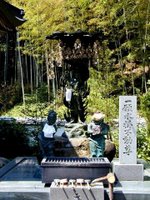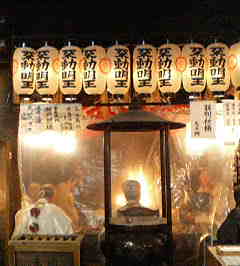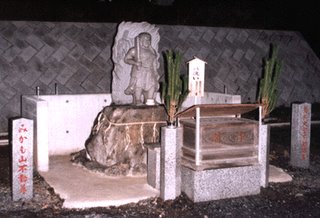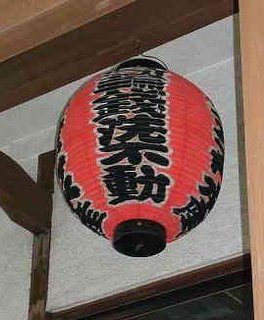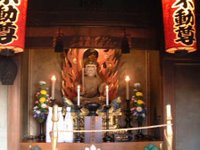:::::::::::::::::::::::::::::::::::::::::::::::::::::::::::::::::::::::::::::::::::::::::::::::::::::
Dainichi Nyorai 大日如来
The most important deity of Esoteric Buddhism. He is in the center of the Kegon Sutra and the Mandala of Both Worlds.
Great Sun, Dai Nichi.
He is usually depicted seated only, to express his unmovable position in the center of the universe.
English Information about Dainichi Nyorai
by Mark Schumacher !!!!!
Below is some information in Japanese and German.
:::::::::::::::::::::::::::::::::::::::::::::::::::::::::::::::::::::::::::::::::::::::::::::::::::::
Taizookai Mandala, Womb Mandala 胎蔵曼荼羅
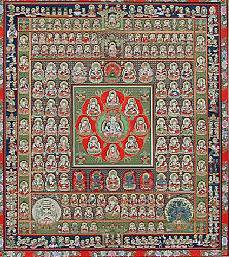
Great LINK in Japanese. 日本語の資料
http://www.sakai.zaq.ne.jp/piicats/mandara2.htm
. Dainichi Sutra 大日経 Dainichi Kyo
Mahavairocana Sutra .
:::::::::::::::::::::::::::::::::::::::::::::::::::::::::::::::::::::::::::::::::::::::::::::::::::::
Statues 仏像
Sano Bijutsukan Museum
Dainichi from the Heian Period
大日如来坐像(だいにちにょらいざぞう)
【重要文化財】 平安時代(12世紀)

大日如来は密教の世界の絶対的な真理で、密教が想定した二つの世界である胎蔵界と金剛界の中核とされます。
この像は左拳人さし指を右拳で握る「智拳印」を結び、金剛界の大日如来であることを示しています。
一本の桧材から頭部と胴部を彫り出し、前後に割って、割れを防ぐため内側を刳り、更に頸の付け根で頭部を割り離して仕上げる、割矧(わりはぎ)造りで造られています。
平安後期の代表的な和風彫刻の様式である定朝様式をふまえており、洗練された優雅さとともに、地方の作らしいおおらかさも漂います。
http://www.sanobi.or.jp/syuzou/meihin/nyorai.html
:::::::::::::::::::::::::::::::::::::::::::::::::::::::::::::::::::::::::::::::::::::::::::::::::::::
運慶作と推定される大日如来像
by 山本勉


この大日如来像を所蔵する個人から照会の書状を頂戴したのは昨年7月だった。 同封の写真から、わたしが16年前の論文で運慶作品として評価した、栃木県足利市の光得寺[こうとくじ]大日如来像によく似た像容であることがわかっていたが、9月後半に所蔵者のお宅にうかがって実際に調査してみると、想像をはるかにこえる優作であった。
細部まで光得寺像と同じ形で、像高はほぼ倍の66.1cm(光得寺像は31.3cm)。 光得寺像同様、作風・構造技法いずれも運慶自身の特色を濃厚に示し、上げ底式に刳[く]り残した像底部に台座との接合用の金具を打ち込む点は、光得寺像との共通点としてことに興味深かった。
衝撃的な新発見の像をどう位置づけてよいものか、正直なところ、最初はかなり悩み、迷ったのだが、調査データを整理して写真をくりかえしながめるうちに、像は多くのことを語りはじめた。 しだいにさまざまなものがみえてきた。
こちらで詳しいことを読んでください
http://www.yurindo.co.jp/yurin/back/yurin_439/yurin4.html
:::::::::::::::::::::::::::::::::::::::::::::::::::::::::::::::::::::::::::::::::::::::::::::::::::::
真言宗の本尊・宇宙も草木も人も本質は大日如来

© Copyright 2000 Zuiun Matsuda.
http://www.butsuzou.com/jiten/dainiti1.html
:::::::::::::::::::::::::::::::::::::::::::::::::::::::::::::::::::::::::::::::::::::::::::::::::::::
Paintings 如来図
Dainichi Nyorai and Kobo Daishi
大日如来・弘法大師

Copyright(C)1999-2006 Eitikai
http://www.eitikai.co.jp/eitikai42singon.htm
:::::::::::::::::::::::::::::::::::::::::::::::::::::::::::::::::::::::::::::::::::::::::::::::::::::
. Dainichi son no kirei, oni no dorei 大日尊の鬼鈴
demon clay bell for Dainichi Nyorai .
temple Bannaji 鑁阿寺, Ashikaga town, Tochigi
:::::::::::::::::::::::::::::::::::::::::::::::::::::::::::::::::::::::::::::::::::::::::::::::::::::
Temple 妙楽寺 Myoraku-Ji, Chiba
Dainichi Statue, Heian period
Dainichi Temple Visit (Dainichi Mairi)
kigo for the New Year
Fudo Myo-O is an incarnation of Dainichi Nyorai
Aizen Myo-O is an incarnation of Dainichi Nyorai
:::::::::::::::::::::::::::::::::::::::::::::::::::::::::::::::::::::::::::::::::::::::::::::::::::::
Japanese LINKS
http://www10.ocn.ne.jp/~mk123456/daintn.htm
http://www.shopping.lagoon-net.com/item/syouhin.php?m_pid=120501&m_oid=00162
Statue at Meguro, Tokyo
http://meguroku-net.com/meisyo/megurofudou/P3-nyorai/F3-nyoraizou.htm
:::::::::::::::::::::::::::::::::::::::::::::::::::::::::::::::::::::::::::::::::::::::::::::::::::::
. . . . . H A I K U
山笑う秘仏大日如来とか
yama warau hibutsu dainichi nyorai toka
mountains laughing -
the secret statue of
Dainichi Nyorai ... they say
© Kanda Shoori 金田勝利
O-Take Nyorai お竹如来 and haiku by ISSA
:::::::::::::::::::::::::::::::::::::::::::::::::::::::::::::::::::::::::::::::::::::::::::::::::::::::::::::::::::::::::::::::::::
observance kigo for late autumn
. Daikakuji Dainichi E 大覚寺大日会
Ceremony for Dainichi Nyorai
at Temple Daikaku-Ji .
At the Dainichi Hall of the Octagonal Hall
八角堂の大日堂の祭り
28 of October
:::::::::::::::::::::::::::::::::::::::::::::::::::::::::::::::::::::::::::::::::::::::::::::::::::::
:::::::::::::::::::::::::::::::::::::::::::::::::::::::::::::::::::::::::::::::::::::::::::::::::::::
Dainichi Nyorai (Mahaa Vairocana Tathaagata)
Auch Großer Birushana (Maka Birushana) oder Großer Strahlender (Daikoomyoo henshoo) genannt. Mächtigster aller Nyorai, kosmischer Buddha. Eventuell aus einem alten Sonnenkult entstanden. Sein Körper ist die Personifizierung der Lehre des Buddismus.
"Die Sonne scheint nur Tags und Nachts ist Schatten, aber die Weisheit des Nyorai strahlt immer und überall, daher wird er "Große Sonne" (DAI NICHI) genannt." Aus ihm gehen alle anderen Buddhas und Bosatsu hervor. Alle Dinge des Universums bilden den Körper des Dainichi.
Höchste zentrale Gottheit des esoterischen Buddhismus. Durch die übergroße Macht des Dainichi wird die Lehre direkt in der Welt verbreitet, ohne daß der Vermittler Shakyamuni notwendig wird. Aus Dainichi entspringt die Tugend des ganzen Kosmos, und alle Tugenden der einzelnen Buddhas führen letztendlich wieder zum Dainichi zurück. Diese Beziehungen werden in den Mandalas der beiden Welten ausgedrückt.
Siehe auch "Die fünf Weisheitsbuddhas".
In Indien, China und Korea gibt es wesentlich weniger Statuen des Dainichi als in Japan, da der esoterische Buddhismus in Japan bis auf den heutigen Tag noch praktiziert wird.
Dainichi ist das Zentrum der Mandalas der beiden Welten, aber in der Shingon-Sekte finden sich seine Statuen auch als Hauptkultbild, dann meist in der Form der Diamantwelt. Seine japanische Entsprechung (honjibutsu), Amaterasu Oomikami, wird nur im Schrein in Ise verehrt.
Dainichi der Diamantwelt:
Verkörpert den äußeren Aspekt der Weisheit des Dainichi bzw. der Funktion des Weltalls. Größte Figur des Mandala in der Mitte der obersten Reihe von drei Reihen mit insgesamt neun Feldern.
Mitleidshaltung der Hände. Sie drückt die höchste Form der Erleuchtung und damit die religiöse Theorie (kyoosoo) aus. Hohe Krone. Brustschmuck.
Weitere Inkarnation als Goosanze Myôô.
Dainichi der Mutterschoßwelt:
Verkörpert den inneren Aspekt der Vernunft des Dainichi bzw. die Form des Weltalls. Größte Figur in der Mitte des Mandala; auf einem Lotussockel.
Meditationshaltung der Hände. Über den gefalteten Händen breitet sich das ganze Weltall aus. Diese Handhaltung versinnbildlicht die religiöse Praktik (jisoo) des esoterischen Buddhismus.
Hoch aufgekämmte Haare. Kein oder wenig Brustschmuck. Insgesamt einfachere Figur.
Weitere Inkarnation als Fudoo Myôô.
In einer mehr volksnahen Version spendet Dainichi Glück in dieser Welt, heilt Krankheiten und verhilft zur sicheren Geburt.
Das jährliche Abbrennen eines großen Feuers in der Form des Schriftzeichens "DAI" (Daimonji no Hi) am Nyoi-ga-oka-Berg in Kyooto geht möglicherweise auf diese Gottheit zurück. 大文字焼
Dainichi selbst ist eine sehr hohe Gottheit. Daher hat er drei Inkarnationen (sanshu rinhsin). Als Nyorai verkörpert er die Eigennatur (jishoo rinjin), als Bosatsu die rechte Lehre (shooboo rinshin) und als Myoooo die Verbreitung der Lehre (kyooryoo rinshin).
Ikonografie:
Einziger Nyorai mit Schmuck eines Bosatsu (einschl. langes Perlengehänge (yooraku) um den Körper sowie Reifen um Ober- und Unterarme (wansen, hisen), aber ohne fliegende Gewänder. Hohe Krone (hookan) mit den fünf Weisheitsbuddhas. Brustschmuck (munakazari).
Oft Mitleidshaltung der Hände mit beiden Fäusten vor der Brust. Manchmal auch Rad der Lehre in der Hand.
Im Allgemeinen nur sitzende Statuen. Dies soll seine unbewegte Existenz als Zentrum des Universums verdeutlichen.
Besondere Statuen:
Dreiergruppe des Dainichi (Dainichi sanzon) 大日三尊
Dainichi Nyorai mit Shaka Nyorai und Amida Nyorai. Diese Formation gehört weniger dem esoterischen als dem allgemeinen Buddhismus an, da sich Shaka und Amida beim Volk großer Beliebtheit erfreuten.
Quoted from my books on Buddhist Art.
Dietrich Seckel
Buddhastatuen (Buddhastatues) Who is Who,
Ein Wegweiser zur Ikonografie von japanischen Buddhastatuenby Gabi Greve
Review by Dietrich Seckel 1994
Buddhistische Kultgegenstände Japans by Gabi Greve
(Buddhist Ritual and Ceremonial Tools, butsugu, hoogu)
Review by Dietrich Seckel
:::::::::::::::::::::::::::::::::::::::::::::::::::::::::::::::::::::::::::::::::::::::::::::::::::::
[ . BACK to WORLDKIGO . TOP . ]
[ . BACK to DARUMA MUSEUM TOP . ]
:::::::::::::::::::::::::::::::::::::::::::::::::::::::::::::::::::::::::::::::::::::::::::::::::::::

